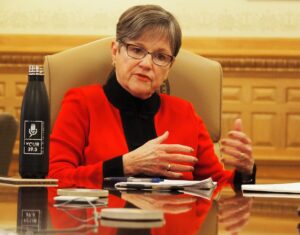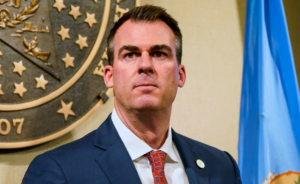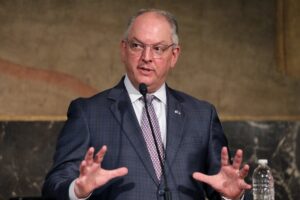In the first reveal of his election year budget proposal Wednesday, Illinois Gov. J.B. Pritzker outlined a modest increase to the state school funding formula and more money for bus service, special education, college scholarships for low-income students, and the state’s youngest learners.
Pritzker laid out plans on Wednesday for a smaller 2023 state operating budget of $45.4 billion compared to the previous year’s. But it includes more investments in education as schools continue to confront the academic and emotional impact of the pandemic on children.
This is the first year since the start of the pandemic that the governor has proposed an increase in education spending during his State of the State and Budget Address. Detailing his plans Wednesday, he said those investments “will go a long way toward meeting our goal of making Illinois the best state in the nation to raise young children.”
He touted in particular his administration’s efforts to prioritize grants for child care programs as part of the state’s economic recovery.
This year, the governor plans to increase the state’s education general fund by $498.1 million — a 5.4% increase — for an overall budget of $9.7 billion. This will add $350.2 million to the formula that disperses funding through a tier system and property tax relief grants to the state’s K-12 school districts. Illinois lawmakers will make the final call on the state’s budget at the end of the session.
This year’s budget proposal is mostly in line with a state board of education proposal from December. The board recommended an increase of $475 million with $350 million going towards the evidence-based funding — a bipartisan effort to fully fund all schools and close funding gaps between wealthy school districts and under-resourced districts. The board also said it needed more money to increase spending on transportation, agricultural education, and truancy officers to combat chronic absenteeism.
“Our students and educators are facing the challenge of a lifetime teaching and learning as we emerge from the pandemic,” said state school superintendent Carmen Ayala in a statement, adding that the investments will mean more teachers, wraparound supports, and early childhood programs.
Lawmakers pledged to add a minimum of $350 million to the funding formula each year — with a goal of more — but Pritzker kept the funding formula flat in 2020, which meant no new state dollars flowing to districts.
Last year’s budget proposal also recommended flat funding, but was reversed during the spring legislative session and $350 million was put into the formula, which was later approved by the general assembly.
Some advocates were hoping the Pritzker administration would put in even more money to the funding formula to make up for missed payments and to help keep the pace of rising costs.
Dan Montgomery, the president of the Illinois Federation of Teachers, said Wednesday in a statement that the union saw the increase as “a step” toward adequately funding schools but would like to see the governor and General Assembly work together to do more.
Districts have reported rising costs on everything from salaries, amid a crippling staffing shortage, to building upkeep and maintenance. Illinois school districts are receiving more than $7 billion across three federal emergency stimulus packages to help with pandemic-related costs.
Robin Steans, president of the nonprofit Advance Illinois, called the budget proposal good news and said she feels hopeful after hearing the governor’s speech on Wednesday.
“This is one of those rare budgets where we have a fiscally responsible budget,” Steans said, “but it’s one that is proposing needed investments and it’s doing it across the entirety of the educational continuum, which is just wonderful to see and good for kids.”
Pritzker, who is running for re-election, said Wednesday that the 2023 fiscal year budget indicates the state is in a better position than it has been in previous years. His administration has boasted of a balanced budget, an improved credit rating, and rising revenues from state and federal sources.
Pritzker is proposing a $1 billion tax cut, with the state suspending 1% sales tax on grocery purchases, postponing a scheduled hike in the gasoline tax, and a one-time property tax rebate that will give homeowners about $300.
The proposed boost in education funding in Illinois is in line with what has happened in other states. New York announced plans to increase its education budget by $2.1 billion in January, for a total of $31.3 billion. The state’s equivalent of Illinois’ evidence-based funding formula, known as Foundation Aid, will see an increase of $1.6 billion. Colorado’s governor, Jared Polis, proposed historic increases to the 2022-2023 education budget in November. The state would increase its K-12 education spending to $6.6.billion, a 3% increase.
Some early education budget lines flat
This year, the governor is proposing a 12% increase for the Early Childhood Block Grant, which insiders say could foot the bill for expanding many of the state’s half-day preschool programs to full-day and to raise salaries of a mostly-female workforce that earns a median $13 per hour.
Pritzker, a billionaire philanthropist who donated generously to early education efforts before taking office, kept spending on the state’s youngest learners mostly flat in the previous budget — a disappointing outcome for policymakers who spent the better part of 2020 studying ways to expand services for children under 5.
This year’s proposal keeps flat some other critical areas of early childhood spending, including an Early Intervention program for young children with developmental delays and other disabilities and the Child Care Assistance Program, a key reimbursement program for child care providers who offer low- or no-cost child care to low-income families and parents attending school.
Ireta Gasner, the vice president of Illinois policy for the national non-profit Start Early, said she appreciated the proposed increase in the education grant. However, she warned of level support for critical efforts such as Early Intervention, particularly when referrals and evaluations for young children are on the rise.
“The proposal doesn’t make significant progress toward the badly-needed transformation of our system,” Gasner said.
Throughout the pandemic, the Pritzker administration nudged up reimbursement rates and issued business recovery grants to stave off closures that have decimated the industry in other states. Advocates had urged the governor’s office to put more money toward child care reimbursements and continue to assist providers, who have struggled with thin margins during the pandemic.
The proposed early education budget increase comes on the heels of a stalled federal investment for universal preschool through President Biden’s Build Back Better plan. In all, Illinois spends a little under $2 billion its young learners — a fraction of what it spends on K-12.
A boost for scholarships and higher ed
Pritzker campaigned on a promise to increase the number of low-income students who receive college scholarships, and his proposal delivers the most substantial boost to that effort of his term. The state’s Monetary Assistance Program, or MAP, would grow to $601 million, a 25% increase that would mean about 24,000 additional high school seniors receive funding, the state projected.
Illinois also plans to boost the maximum award, from $6,438 per student to $8,508, which is roughly half the cost of in-state tuition at the University of Illinois at Urbana-Champaign.
Overall, Illinois only spends about 5% of its overall budget on its higher education system. An increase from the previous year, Pritzker’s $2.2 billion proposal includes $68 million more to help stabilize community colleges and public universities and additional monies for career and technical education certification programs and scholarships for minority teachers.
The proposal also includes $230 million to help rescue the state’s prepaid college tuition program, which has been headed for insolvency.
This article was originally posted on Pritzker proposes 5.4% increase to education funding in 2023 budget






Be First to Comment